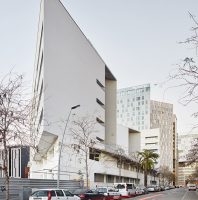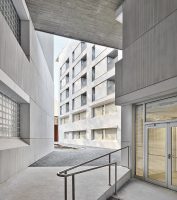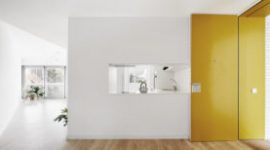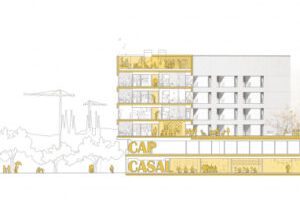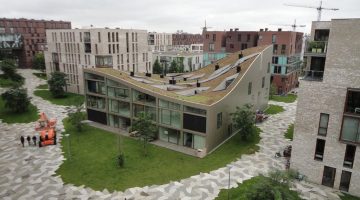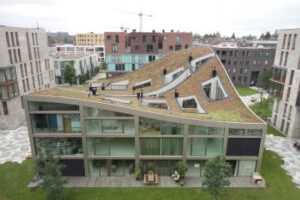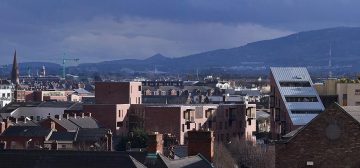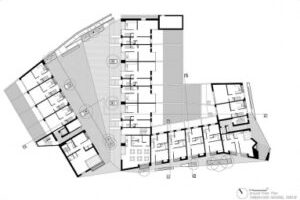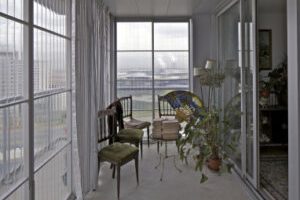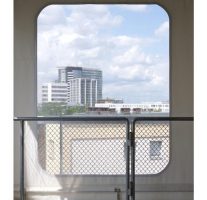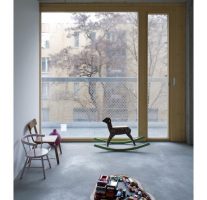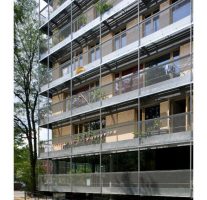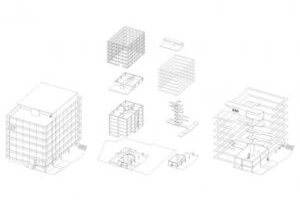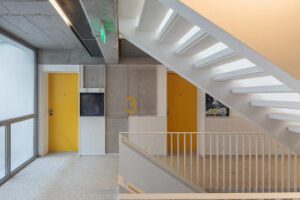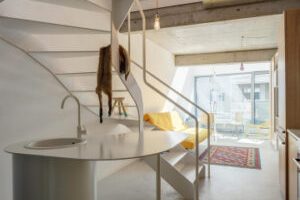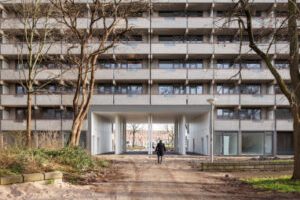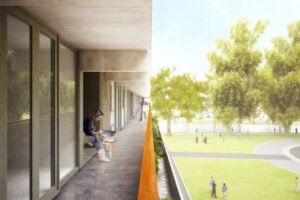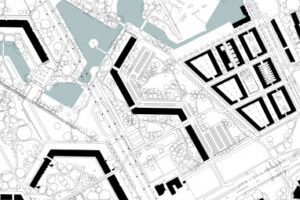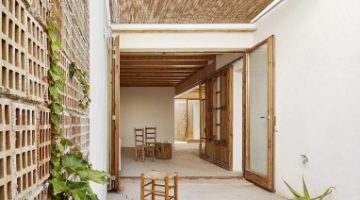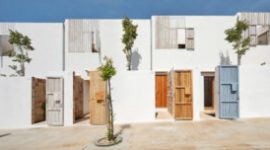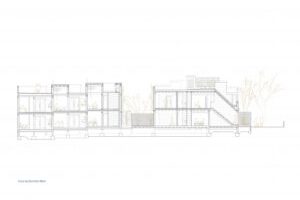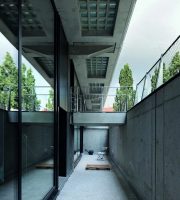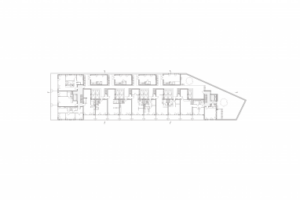
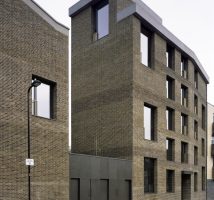
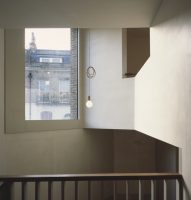
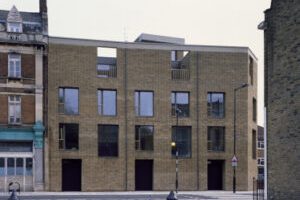
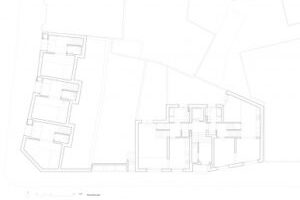
Shepherdess Walk Housing
Main objectives of the project
Shepherdess Walk is a contemporary residential development in central London, blending with the historical context of the area. The project features houses and apartments with a split-level design, offering spatial generosity and flexibility. The exterior spaces vary, including walled gardens for houses and panoramic views for apartments. The design draws inspiration from the historical terraced housing of Shepherdess Walk, with subtle variations in façades and a folding effect to create a connection with the surrounding Georgian terrace. The apartment building complements the larger post-war housing nearby. Both buildings are clad in brick, reflecting the local materiality. Deep window reveals and raw interior materials such as plaster, timber, concrete, brass, and steel add character and patina over time. Handcrafted elements like walnut handrails and brass ironmongery provide a tactile quality.
Date
- 2015: Construction
Stakeholders
- Architect: Jaccaud Zein Architects
Location
City: London
Country/Region: London, United Kingdom
Description
Shepherdess Walk is a new residential development in central London, located near to Old Street roundabout, on the border of Shoreditch, London’s technology hub and design district of Clerkenwell. Situated at the corner of Shepherdess Walk and Wenlock Street, the project establishes positive relations with the different historical conditions and formal qualities of the site to propose an unapologetically contemporary project for a terrace of houses and an apartment building with a strong sense of place.
A split-level section was developed in collaboration with Solidspace and has been applied to both houses and apartments. This configuration allows for the juxtaposition of rooms with different usages around double-height connected spaces, offering a sense of spatial generosity and continuity. The complexity of the section is not immediately apparent from the exterior with only hints given by the large-scale windows to the presence of the double height spaces.
The split-level arrangement introduced a strong potential for flexibility for the apartments, allowing for possible subdivisions within each unit with multiple access to the stairwell. This flexibility allows for a possible fragmentation of scale and an evolution of use through time to meet the demands of multiple occupancy, of children growing up, of partial rental of the unit, of working from home or just varying use of the different rooms.
Every dwelling has an exterior space with a variety of specific qualities. If the houses have rear walled gardens which echo the surrounding Georgian types the apartments have a diversity of exterior spaces which open up to spectacular views at the top of the building, incorporating views of London and it’s surroundings into the building. Shepherdess Walk has a rich historical heritage of terraced housing and fragments of the continuous Georgian frontages, still visible despite the heavy bomb damage suffered during the Second World War. The project draws on this historical fabric and reinstates three terraced houses on Shepherdess Walk in a contemporary reinterpretation of the type. Gentle variations of the façades enable a subtle closure of the street towards the adjacent park, giving both orientation to the open space from within the building and clarification of the boundaries of the streetscape. This slight folding echoes the geometry of the adjacent Georgian terrace, reinforcing the historical identity of the street. Facing on to Wenlock Street, the first house folds more sharply asserting its presence towards the south and opening the angle of the site towards a second apartment building. This shift in scale between the two buildings generates a vivid urban juxtaposition that reinforces the presence of the corner in the neighborhood.
The apartment building rises in scale beyond the houses to stitch the development into the context of bigger scale post-war housing which extend beyond
Both buildings are clad in a brick that was chosen to reflect the patinated materiality of the surroundings, once again stitching the development into its context. Slight variations to the pointing of the brickwork allow for a horizontal banding to the apartment building façade, directing the gaze along the depth of the street and marking an articulation in the bulk of the building. Deep window reveals emphasise the threshold between the intimacy of the interior spaces and the street giving a sense of weight and presence to the buildings. All internal spaces have been developed using a palette of raw materials, plaster, timber, concrete brass and steel which are designed to patinate with use, giving each space a specific and unique character which will develop through time. Handrails and ironmongery have been designed to offer a sensual tactile quality, using hand crafted traditional materials such as solid walnut and brass.


